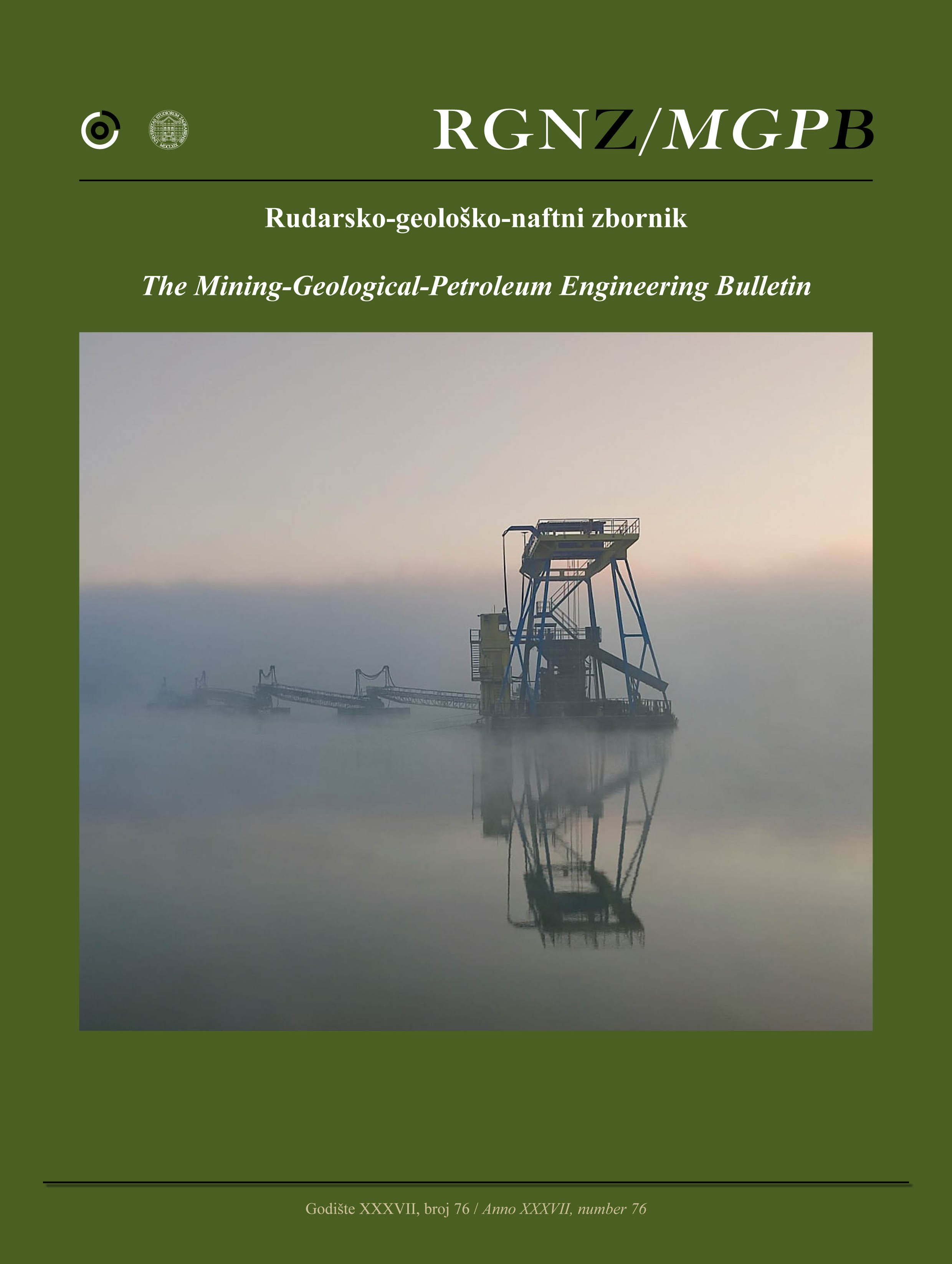Combining the 3D geological and geostatistical modelling of gypsum concentration, using historical borehole and blasthole information
DOI:
https://doi.org/10.17794/rgn.2025.5.9Keywords:
gypsum quarry, ordinary kriging, geological model, geostatistical block modelAbstract
Geostatistics is used for estimating grade content in an ore deposit, thus enhancing the 3 Dimensional (3D) geological model precision, lowering the geological risk and boosting the performances of the mining industry. Despite the advantages, for decades the commercial application of the geostatistical tools has been mainly restricted to large metal mines. Except for a few notable cases, the majority of small-scale operations (quarries and industrial minerals) had hardly adopted geostatistical methods, due to the perceived complications compared to the advantages. Nowadays, things are changing, thanks to: the reduction of artisanal mining, the spread of informatization in all sectors, the necessity to improve the quarrying efficiency, the path towards sustainable mining and the challenges to obtain the social license to operate. This paper presents the recent digitalization and modelling work conducted at the “Monte Tondo” gypsum quarry (Italy), located in Northern Italy, besides the UNESCO natural heritage site named “karst and evaporite caves of the northern Apennines“. The geostatistical techniques were used to estimate the concentration block model using blastholes while a 3D geological model was realised using historical boreholes. Combining two models could help for a better understanding and interpreting of the extracted gypsum and could make an important improvement to detect the future areas of interventions, subjected to strict authorization rules by the local environmental authority.
Downloads
Published
Issue
Section
License
Copyright (c) 2025 Stefano Merli, Sara Kasmaee, Cristina Barbalucca, Vanessa Cellini, Francesco Tinti

This work is licensed under a Creative Commons Attribution 4.0 International License.
Creative Commons-BY
Authors who publish with this journal agree to the following terms:
In agreeing this form, you certify that:
- You read the ethical codex of the RGN zbornik available at journal web.
- You submitted work is your original work, and has not previously been published and does not include any form of plagiarism.
- You own copyright in the submitted work, and are therefore permitted to assign the licence to publish to RGN zbornik.
- Your submitted work contains no violation of any existing copyright or other third party right or any material of an obscene, libellous or otherwise unlawful nature.
- You have obtained permission for and acknowledged the source of any illustrations, diagrams or other material included in the work of which you are not the copyright owner.
- You have taken due care to ensure the accuracy of the work, and that, to the best of your knowledge, there are no false statements made within it.
- All co-authors of this submitted work are aware of, and in agreement with, the terms of this licence and that the submitted manuscript has been approved by these authors.
Publication licence
You retain copyright in your submitted work, according to journal license policy (CC-BY). By signing this form you agree that RGN zbornik may publish it under the publication licence. In summary the licence allows the following:
Anyone is free:
- To copy, distribute, display, and perform the work.
- To make derivative works.
Under the following conditions:
- The original author must always be given credit.
- The work may not be used for commercial purposes.
- If the work is altered, transformed, or built upon, the resulting work may only be distributed under a licence identical to this one.
Exceptions to the licence
In addition to publishing the work printed under the above licence, RGN zbornik will also enable the work to be visible online.
The journal editorial can change the licence rules anytime but it cannot retroactively restrict author(s) rights.


